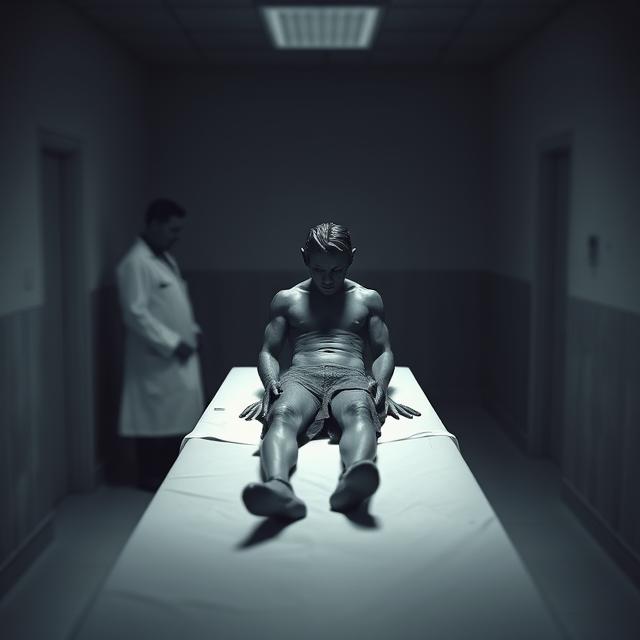In the frost-bitten plains of Pingfang, near Harbin in occupied Manchuria (present-day China), a sprawling complex disguised as a lumber mill operated in chilling secrecy during World War II. This was Unit 731, the Imperial Japanese Army’s clandestine biological and chemical warfare research and development facility. Under the guise of medical research, Unit 731 committed some of the most horrific atrocities in human history, subjecting thousands of live human beings—men, women, and children, overwhelmingly Chinese and Korean, but also Russian and Allied POWs—to unimaginable medical experimentation. The scale of their depravity, the scientific coldness of their methods, and the subsequent lack of prosecution for its perpetrators in exchange for their gruesome data, cast a long and dark shadow over Japan’s wartime past and serve as a horrifying testament to the ultimate perversion of science.
The origins of Unit 731 can be traced back to the early 1930s, fueled by Japan’s aggressive expansionist ambitions and its desire to develop devastating biological weapons. The unit was commanded by Lieutenant General Shiro Ishii, a brilliant but utterly ruthless microbiologist. Ishii was a fervent nationalist who believed that biological warfare was the ultimate weapon and that human experimentation was necessary to perfect it. He established a network of satellite units, but Unit 731 was the primary and most infamous research hub.
The victims of Unit 731 were referred to as “maruta,” meaning “logs” in Japanese, a chilling dehumanization that reflected their status as mere experimental subjects. These “logs” were abducted civilians, political prisoners, suspected spies, common criminals, and Allied prisoners of war, all brought to Pingfang for systematic torture in the name of “science.”
The types of human experimentation conducted at Unit 731 were extensive and unspeakably cruel:
- Vivisections: Live vivisections were performed on conscious victims without anesthesia. This included dissecting individuals to study the effects of various diseases on internal organs, or to observe the progression of untreated infections. Pregnant women were vivisected, and even babies were reportedly subjected to experiments.
- Biological Warfare Testing: Victims were deliberately infected with deadly pathogens such as plague, cholera, anthrax, typhoid, dysentery, and syphilis. They were then observed to study the disease progression, often without treatment. Some were subjected to field tests where they were exposed to plague-infested fleas dropped from aircraft.
- Chemical Warfare Testing: Victims were exposed to chemical weapons, including mustard gas and other toxic agents, to study their effects on the human body.
- Frostbite Experiments: To understand the effects of frostbite and develop countermeasures for warfare in cold climates, victims were subjected to extreme cold, their limbs frozen and then thawed to varying degrees, often leading to gangrene and amputation.
- Weapon Testing: Victims were tied to stakes and subjected to grenade explosions, flamethrowers, and other weapons to determine their effectiveness at various distances.
- Other Gruesome Experiments: This included forced amputations, removal of organs, forced abortions, infanticide, transfusions of animal blood, starvation experiments, and injecting victims with animal urine or sea water to study their impact.
The scale of these atrocities was immense. While exact numbers are difficult to ascertain due to the secretive nature of the unit and the destruction of records, it is estimated that between 3,000 and 10,000 people died at Unit 731’s Pingfang headquarters alone due to experimentation. Many more died in subsidiary units and during field tests.
The motivations behind these horrific acts were purely utilitarian from the perspective of the Japanese military: to develop biological and chemical weapons that could provide a decisive advantage in warfare. Ishii and his colleagues believed that traditional medical ethics did not apply to these “logs” who were considered enemies of the state or subhuman.
The full extent of Unit 731’s atrocities remained largely unknown to the general public for decades after the war. However, a shocking truth emerged: the United States granted immunity from war crimes prosecution to Ishii and other high-ranking members of Unit 731 in exchange for their research data on biological warfare. This controversial decision, made in the early Cold War era, prioritized military intelligence over justice for the victims. The data obtained from Unit 731’s experiments, conducted on live human beings, was deemed invaluable by American scientists at the time.
This lack of prosecution for the perpetrators of such heinous crimes is a deeply controversial aspect of Unit 731’s legacy. While the Tokyo War Crimes Tribunal largely focused on conventional war crimes, the vast majority of Unit 731’s personnel were never tried, allowing them to return to civilian life, with some even pursuing successful careers in medicine in post-war Japan.
The revelation of Unit 731’s existence and its atrocities has had a profound and lasting impact. It exposed a dark chapter of Japan’s wartime history, leading to calls for greater accountability and recognition of the victims. For many years, the Japanese government remained largely silent on the issue, but increasing international pressure and the tireless efforts of historians and survivors have led to greater acknowledgment of these crimes.
Unit 731 stands as a chilling reminder of the ultimate perversion of science and medicine. When ethical boundaries are abandoned, and individuals are dehumanized in the name of scientific advancement or military gain, the consequences can be truly monstrous. The victims of Unit 731, reduced to mere “logs” for experimentation, represent a profound stain on human history, and their suffering serves as a permanent warning against the atrocities that can occur when humanity loses its moral compass.
Want to explore the shadows even deeper? For more chilling cases like this, visit SinisterArchive.com, where the legends are real.




